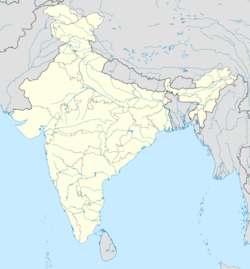Top Qs
Timeline
Chat
Perspective
Parangarpar
Census Town in West Bengal, India From Wikipedia, the free encyclopedia
Remove ads
Parangarpar is a census town in the Falakata CD block in the Alipurduar subdivision of the Alipurduar district in the state of West Bengal, India.
Remove ads
Geography
Summarize
Perspective

8km
5miles
5miles
B
H
U
T
A
N
R
Dheklapara TG
R
Bandapani TG
V
Jaldhaka River
U
Torsha River
T
Titi
Reserved
Forest
Reserved
Forest
S
Khairbari
Reserved
Forest
Reserved
Forest
NP
Jaldapara
National
Park
National
Park
TE
Aryaman TE
R
Sonapur
R
Totopara
R
Pachkalguri
R
Birpara TG
M
Alipurduar
CT
Birpara
CT
Sisha Jumrha
CT
Paschim Jitpur
CT
Parangarpar
CT
Madarihat
CT
Jateswar
CT
Jagijhora Barabak
CT
Falakata
CT
Chechakhata
CT
Bholar Dabri
CT
Alipurduar Railway Junction
Places and tea estates in the western portion of Alipurdar subdivision (including Madarihat-Birpara, Falakata and Alipuduar I CD blocks) in Alipurduar district
CT: census town, R: rural/ urban centre, N: neighbourhood, NP: national park/ wildlife sanctuary, TE: tea estate
Abbreviations used in names – TG for Tea Garden (town/village), TE for Tea Estate
Owing to space constraints in the small map, the actual locations in a larger map may vary slightly
CT: census town, R: rural/ urban centre, N: neighbourhood, NP: national park/ wildlife sanctuary, TE: tea estate
Abbreviations used in names – TG for Tea Garden (town/village), TE for Tea Estate
Owing to space constraints in the small map, the actual locations in a larger map may vary slightly
Location
Parangarpar is located at 26.5437°N 89.1945°E.
Area overview
Alipurduar district is covered by two maps. It is an extensive area in the eastern end of the Dooars in West Bengal. It is undulating country, largely forested, with numerous rivers flowing down from the outer ranges of the Himalayas in Bhutan. It is a predominantly rural area with 79.38% of the population living in the rural areas. The district has 1 municipal town and 20 census towns and that means that 20.62% of the population lives in urban areas. The scheduled castes and scheduled tribes, taken together, form more than half the population in all the six community development blocks in the district. There is a high concentration of tribal people (scheduled tribes) in the three northern blocks of the district.[1][2][3]
Note: The map alongside presents some of the notable locations in the subdivision. All places marked in the map are linked in the larger full screen map.
Remove ads
Demographics
As per the 2011 Census of India, Parangarpar had a total population of 11,408. There were 5,930 (52%) males and 5,478 (48%) females. There were 1,084 persons in the age range of 0 to 6 years. The total number of literate people in Parangarpar was 8.750 (84.75% of the population over 6 years).[4]
Infrastructure
According to the District Census Handbook 2011, Jalpaiguri, Parangarpar covered an area of 5.7041 km2. Among the civic amenities, it had 23 km roads, with open drains, the protected water supply involved tap water from treated sources, uncovered wells. It had 1,661 domestic electric connections, 175 road lighting points. Among the medical facilities it had 1 dispensary/ health centre, 1 family welfare centre, 1 maternity and child welfare centre, 1 maternity home, 1 veterinary hospital, 10 medicine shops. Among the educational facilities it had 7 primary schools, 3 middle schools, 2 secondary schools, 2 senior secondary schools. It had 1 recognised shorthand, typewriting and vocational training centre, 5 non-formal education centres (Sarva Shiksha Abhiyan), 1 orphanage home. Three important commodities it produced were: ply wood, wooden furniture, jute choir. It had branches of 1 nationalised bank, 2 cooperative banks.[5]
References
Wikiwand - on
Seamless Wikipedia browsing. On steroids.
Remove ads

